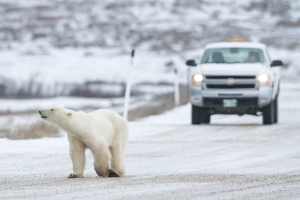Fig. 5 from the study. In these hotspot maps you can see a comparison of salmon consumption between a male and female grizzly bear. The darker red areas on the map are spots where the grizzlies have a high reliance on salmon for their diet. The bar graphs (histograms) show where the bears are characterized to eat more salmon; note that the x-axis is on a percentage scale, meaning more salmon is consumed the further right you are on the graph.
Bear-salmon-human interactions key to consider in management practices
The findings have important implications for conservation managment, both at land and sea.
Currently, salmon are managed at a federal level while bears are managed provincially. The distinction can lead to siloes of practice and information within a ecosystem that is otherwise very interconnected.
“These [management] systems are extremely separated due to different geopolitical barriers. Bears and fish don’t care about that,” says Adams.
The links found in the relationship between the salmon and bears have special significance when you also consider how current bear-human conflict is managed. Right now, one of the main ways the provincial government addresses bear-human conflict will be to remove or kill the bear. But a previous study done by Kyle Artelle, a Raincoast Conservation biologist who is a co-author in Adams paper, found that while changing hunting levels or removing the problematic bear did not reduce conflict levels, increasing salmon abundance did.
In fact, the study found that yearly conflicts between bears and humans increased on average by 20 per cent for every 50 per cent decrease in salmon available for the bears.
“There is this mismatch between the ecology and bear management system. The sea is connected to the land but the management doesn’t reflect that in meaningful ways,” says Artelle. “This new paper shows just how important salmon is to their diet, and that it even extends far in-land.”







